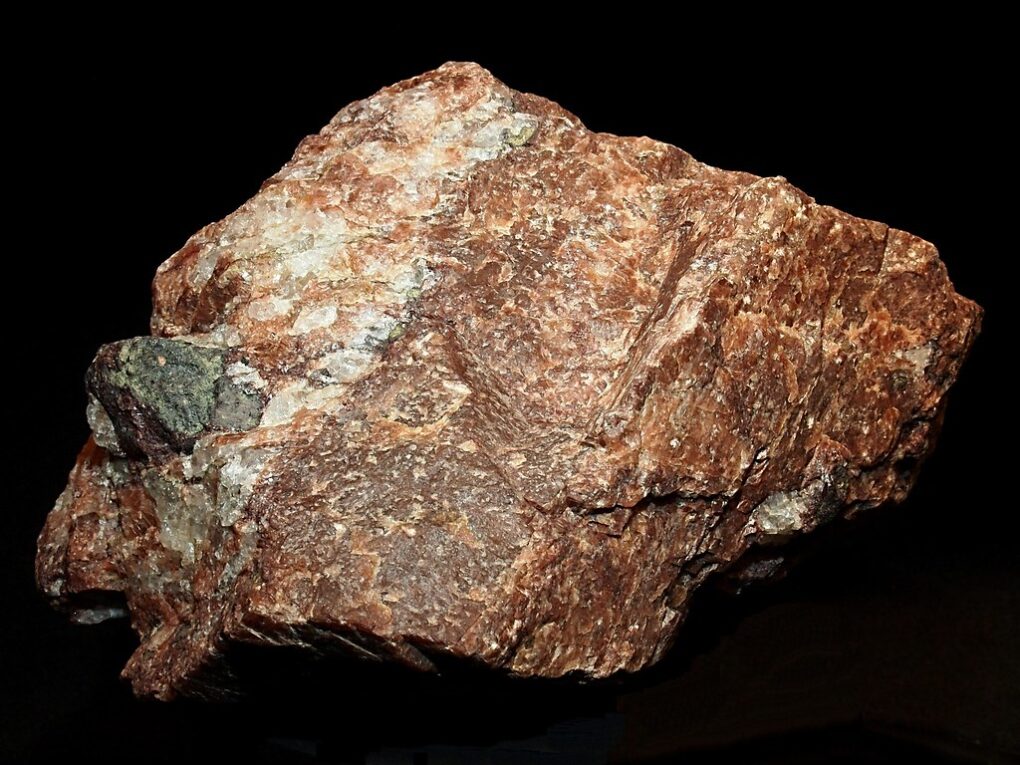Feldspar is an important rock forming mineral present in igneous and metamorphic rocks. It is one of the most common minerals on the earth’s crust. Found in nearly every igneous rock throughout the world, feldspar constitutes around 60% of the earth’s crust by weight. Feldspar plays an important role in global industrial activities and is a vital ingredient in manufacturing numerous products used in our daily lives.
What is Feldspar?
Feldspar comes from the rock-forming mineral group tectosilicates, consisting of aluminium silicate compounds with alkali metals such as potassium, sodium, and calcium. The three main classifications of feldspar are potassium feldspar (orthoclase), sodium feldspar (albite), and calcium feldspar (anorthite). Chemically, feldspars have aluminum silicate structures with Al, Si, O, Na, K, Ca as their main constituent elements. They have a hardness of 6 on the Mohs scale and display crystal forms with glassy to dull luster and colorless to white, gray, pink or orange hues.
Usage in Ceramics Industry
Feldspar forms a major raw material in the production of ceramics, pottery, and glass. Around 60% of the total feldspar production worldwide is consumed by the ceramics industry alone. Feldspar acts as a flux that lowers the melting temperature of other ingredients like quartz. It gives strength, texture and workability to ceramic products, along with high heat resistance. Feldspar is used extensively in manufacturing ceramic tiles, sanitary-ware, tableware, electrical insulators, and other clay products due to its versatile properties.
Role in Glass Production
The glass industry is another significant consumer of feldspar, accounting for over 30% of global demand. Feldspar helps in lowering the melting point and viscosity of glass. It acts as a networkFormer to provide silica and alumina required for glass formulation. Feldspar minerals provide desirable properties like strength, workability and heat resistance to glass. Soda-lime glass used in windows, bottles, and other containers contains around 15-25% feldspar. Specialty glass like low expansion glass for scientific instruments and fiberglass also utilizes feldspar in its manufacturing process.
Usage in Abrasives
Feldspar serves as an important raw material in manufacturing bonded and coated abrasives. After processing, it is converted into grains of uniform size, shape and hardness. These grains are then bonded onto paper, cloth or resin to form products like sandpaper, grinding wheels, cut-off wheels, honing stones etc. Owing to its high cleavage planes and hardness, feldspar grains effectively grip and grind surfaces without slipping. Around 5-7% of total feldspar produced annually is utilized by the abrasives industry for lapping, grinding, and sanding applications in woodworking, machinery component manufacturing and other finish industries.
Role in Production of Enamels and Porcelain Enamels
The feldspar compound is a major constituent of porcelain enamels and ceramic enamels applied on metal products and household appliances for protective and decorative coatings. Ceramic grade feldspar acts as a fluxing agent that helps in proper melting and mixture of glass phases during the enameling process. It contributes to the adhesion, hardness, strength and smoothness of finish properties in enamels. More than 5% of global feldspar reserves are dedicated for use as raw material in the enameling industry. Electrical insulators, cookware, sanitaryware, and other enamel coated items make extensive use of feldspar.
Other Notable Applications
Aside from the above-mentioned major applications, feldspar finds many other specialized uses owing to its versatile properties. It serves as a filler in paints, printing inks, and putty. Feldspar also acts as an important mineral flux for smelting metals like aluminum. Pharmaceutical companies use it as an indigestible inert diluent in medications. Feldspar based minerals like nepheline syenite have refractory applications as well. Landscaping and construction industries utilize feldspar aggregates in concrete production, road-base materials and filtration applications. Specialty grades find niche usage in catalytic crackers, cements, dental casting investment materials and more.
Feldspar has extensive industrial significance and serves as a core ingredient across a diverse spectrum of manufacturing sectors globally. From household ceramics to industrial glass, metal processing to landscaping & construction – feldspar leaves its indelible mark through countless useful applications. With over 60% reserves of the world’s feldspar found in India, it has emerged as one of the important industrial minerals supporting the country’s growing manufacturing prowess. Sustainable mining and development of low-grade feldspar reserves can further boost availability and economies of scale in these vital industries well into the future.
*Note:
1. Source: Coherent Market Insights, Public sources, Desk research
2. We have leveraged AI tools to mine information and compile it

